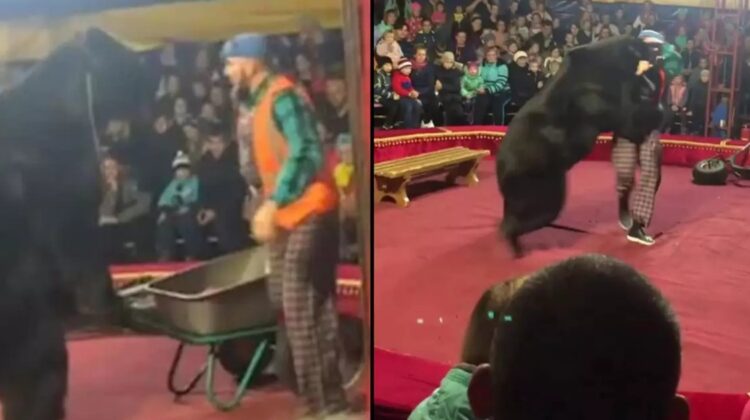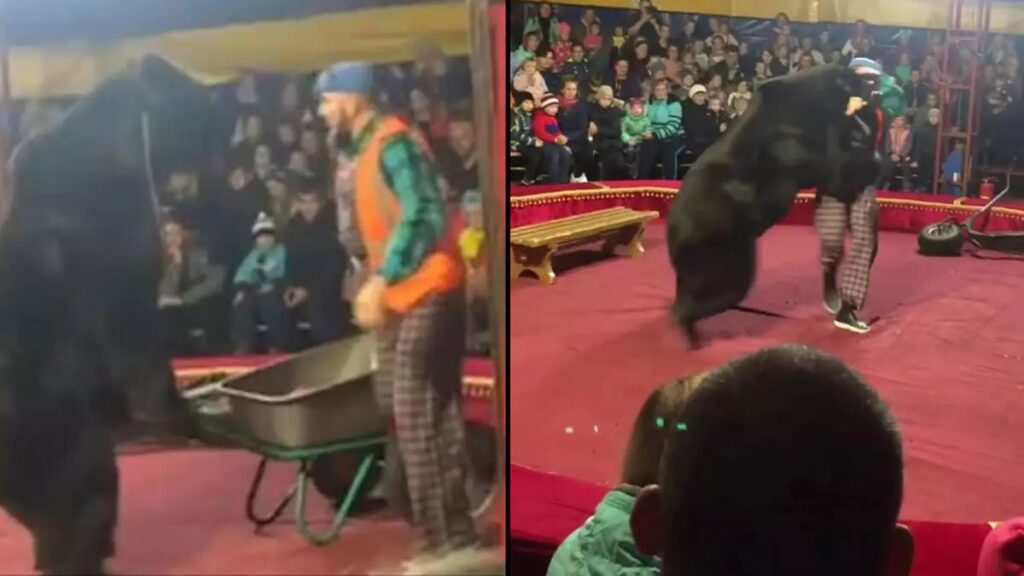
In 2019, a chilling incident at a Russian circus exposed the dark side of animal entertainment. Yashka, a 600lb bear, who had spent years performing in the Anshlag Circus, violently attacked his handler, Ruslan Solodyuk, revealing the cruelty inherent in confining and training wild animals for entertainment.
Yashka’s story is not simply a sensational news item; it’s a stark reminder of the suffering animals endure for our amusement. Forced to perform unnatural tricks, like carting a wheelbarrow in the “Bow-legged and the Wheelbarrow” act, Yashka’s existence was a far cry from the life he was meant to live in the wild.
A Breaking Point:
The attack wasn’t triggered by stage lights, music, or the audience. It was the culmination of years of confinement and forced performance. Yashka, a powerful apex predator, was reduced to a spectacle, his natural instincts suppressed and distorted. The attack was a desperate, primal response to an unbearable situation.

Video footage of the incident shows Yashka biting down on Solodyuk’s arm, refusing to release his grip. Circus workers desperately tried to intervene, kicking the bear and using an electric shocker. Reports indicate that the bear then moved toward the audience area, causing panic and prompting a frantic evacuation. The audience, initially unsure if the attack was part of the act, quickly realized the danger and fled.
A Plea for Understanding:
Solodyuk, in an interview with the Russian news outlet Daily Storm, explained that he was cooperating with the police and had never experienced anything like this with Yashka before. He attributed the attack to the bear’s age and health, stating, “Yashka is huge (weighs 660 pounds), sick, and old — 16 years old. The animal occasionally hurts joints… In spring and autumn, just like in people, Yashka’s problems worsen. This time, the bear crouched on the stage and, apparently, felt pain.”
While Yashka’s pain may have been a contributing factor, it’s crucial to understand the larger context. Wild animals in circuses are subjected to constant stress, confinement, and often, abusive training methods. Their natural behaviors are suppressed, and their well-being is consistently compromised.
The circus, in an attempt to deflect blame, suggested that flash photography might have triggered the attack. However, this excuse ignores the fundamental issue: wild animals do not belong in circuses. No amount of flashing lights should provoke such a violent reaction from an animal unless that animal is already living in a state of constant stress and fear.
Yashka’s attack is a tragic but important reminder of the cruelty inherent in animal entertainment. These animals are not props; they are living, feeling beings who deserve to live in their natural habitats. Yashka’s story should serve as a wake-up call, urging us to reconsider our support of circuses and other forms of animal exploitation. We must recognize that these animals are not ours to use for entertainment. They deserve freedom, not captivity.

Leave a Reply